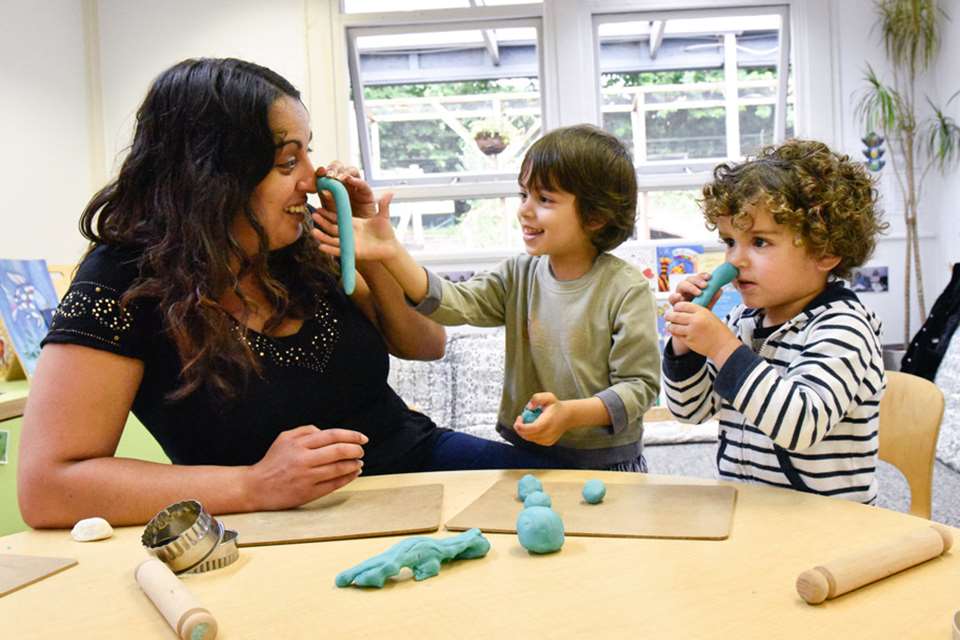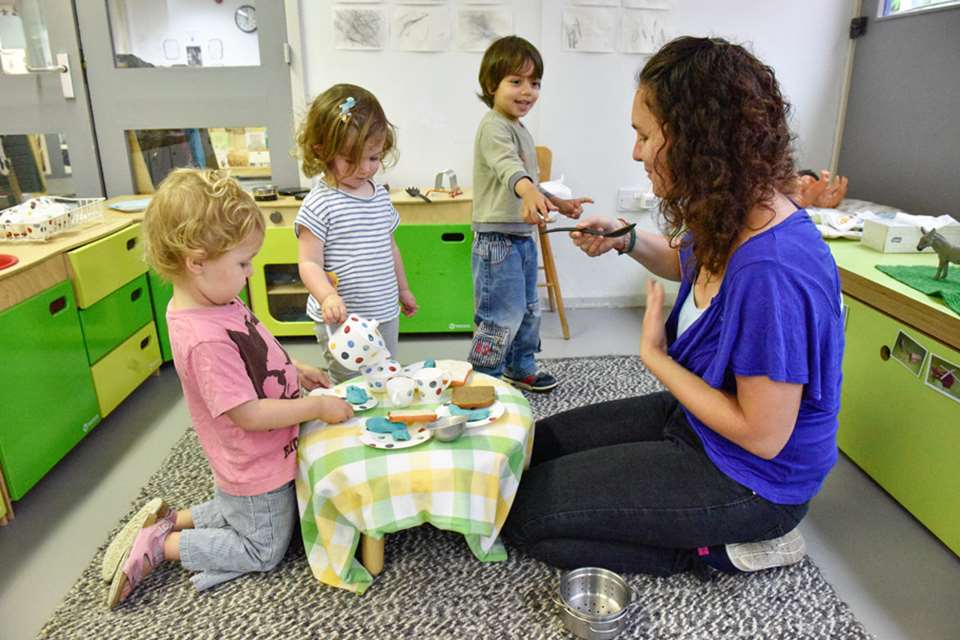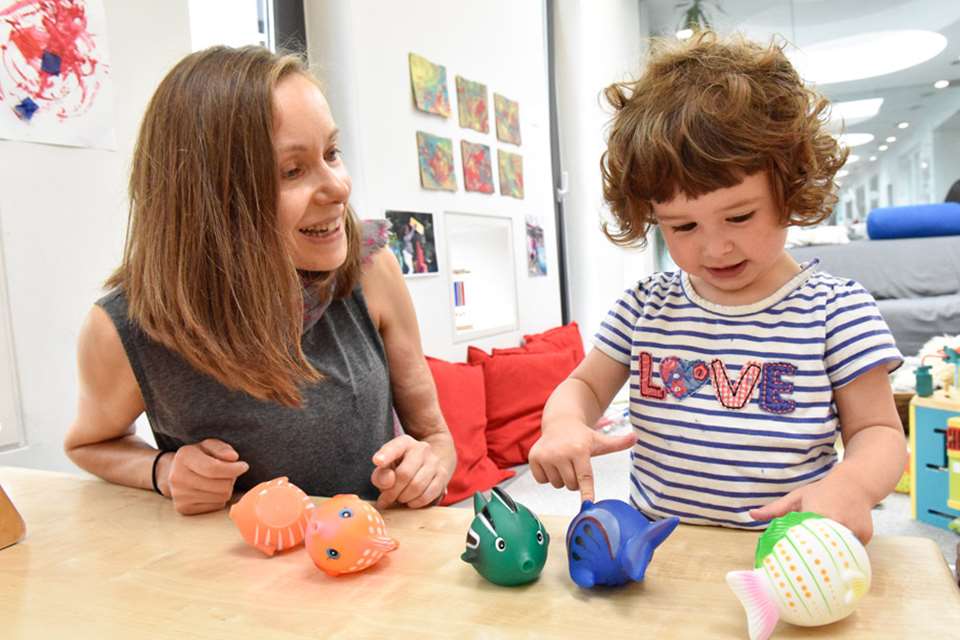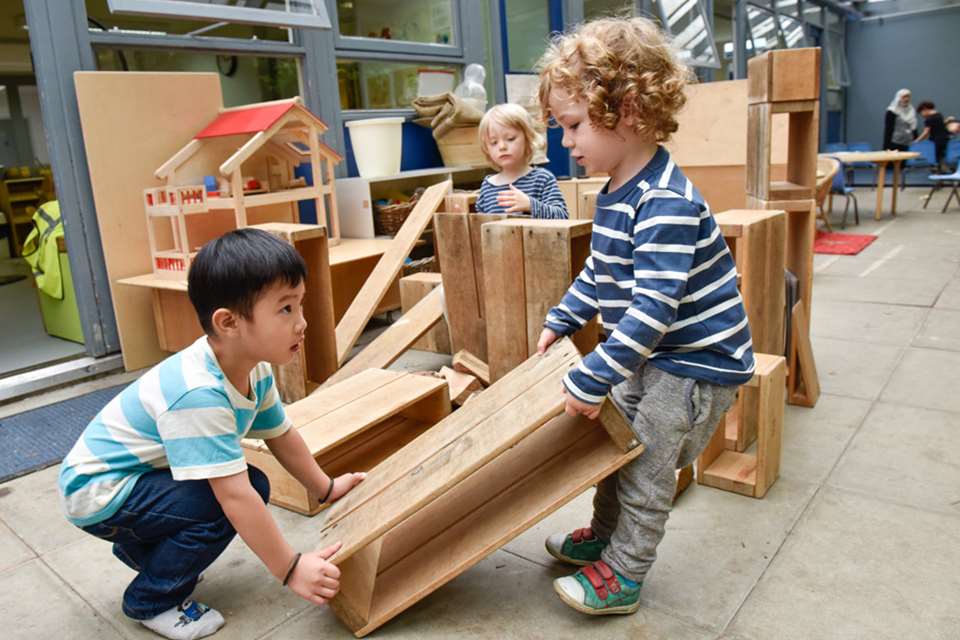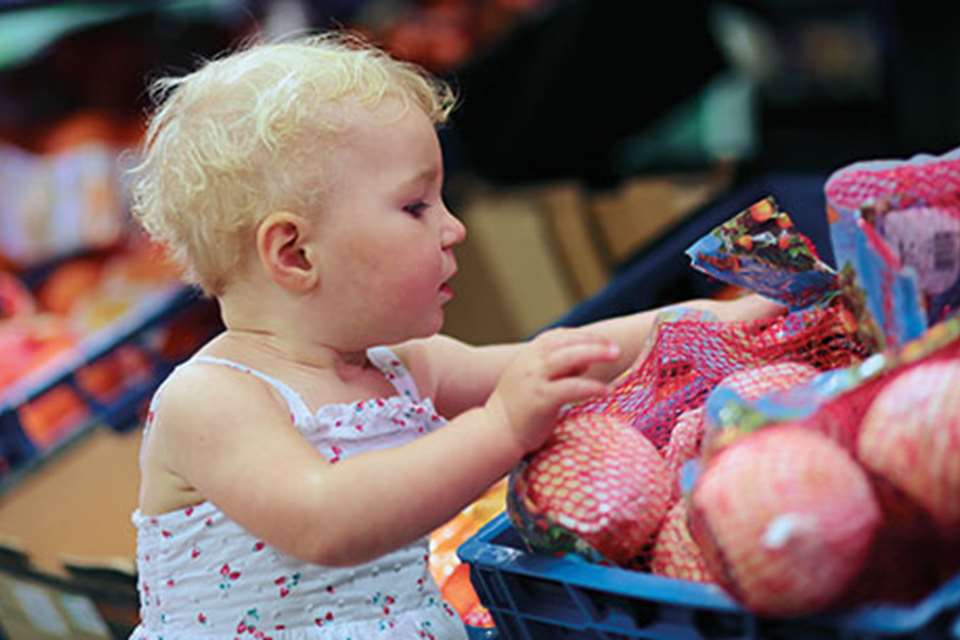EYFS Best Practice: All about… spatial reasoning
Ruth Thomson
Monday, January 8, 2018
Spatial reasoning skills are critical to early learning, particularly in mathematics, and need to be supported by engaging children’s entire bodies. Dr Jennifer S Thom explains why

Download the PDF of All About...Spatial Reasoning
The importance of spatial reasoning cannot be overstated. It is vital to Science, Technology, Engineering and Mathematics (STEM) skills, which are now so sought after in the workplace, but its importance also extends far beyond these disciplines to every facet of our lives and to how we think. As a consequence, practitioners need to be aware of its implications for supporting early learning, particularly in mathematics.
Spatial reasoning, also known as spatial thinking or more comprehensively, spatial cognition, does not lend itself to quick and easy definitions, however. This is because it is not content specific in the same manner that biology, the visual arts or mathematics are disciplines. It is a way of thinking that pervades all subject areas and enables deeper understanding of them.
IN OUR EVERYDAY LIVES AND WORK
As a starting point, we can describe spatial reasoning as how in the mind’s eye, we see the world around us, and how we can picture, understand and manipulate the locations and relative positions of shapes, objects or processes. So, ask a group of adults about spatial awareness and they are likely to share stories of following directions, reading maps or assembling furniture.
Spatial reasoning is a skill that is also required in less obvious aspects of our everyday lives. Moving ourselves from one location to another, using our mobile phones, writing memos, reading a book or planning what we will do tomorrow all involve thinking spatially.
What is more is that our Western ways of living continue to become increasingly spatial. Consider the evolution of the Internet. In the 1990s, the Internet was imagined simply as an ‘information superhighway’ and the first website —the WorldWideWeb or W3—consisted of a screen with alphanumeric text and hypertext that explained the World Wide Web. Today, the Internet is largely graphic media with minimal text.
No longer a superhighway, we now experience the Internet as clouds, villages, communities, rooms, sites, walls, corners and a myriad of combinations of them. All of these are global, and involve portals and gateways for us to browse, search, explore, surf, way-find and navigate. If we stop and think about it, the meanings embedded in these metaphors are completely spatial.
In recent years, the areas in which spatial awareness has been paid the greatest attention – and is seen as a vital skill – are Science, Technology, Engineering and Mathematics (see box, page 22).
A PREDICTOR OF SUCCESS
Given the importance of spatial cognition across STEM subjects, especially in mathematics, it is no surprise that spatial reasoning is a strong predictor in determining both the likelihood of individuals’ participation in STEM disciplines and their future success in these areas.
Researchers have also made connections between children’s early spatial skills and their future mathematics learning in school. In a study that involved three- to five-year-old children, researchers found the spatial thinking of the three-year-olds accurately predicted how well they performed in mathematics two years later at school.
Several other studies in which children copied, drew and built with blocks reported benefits to mathematics learning. Further still, a longitudinal investigation revealed the complexity of children’s block building at five years of age predicted their mathematics performance in secondary school. It is interesting to note that children’s spatial skills prove to be a better gauge for their later mathematics performance than vocabulary and even mathematics tasks.
While conclusions from these studies are promising, caution is necessary in making generalisations. What is clear, however, is that spatial cognition underpins all four STEM subjects. And what is important for early years practitioners to take on board is that spatial reasoning, like mathematical thinking, is not something that we are born with.
Until recently, spatial reasoning was assumed to be a fixed trait, but now more than ever, researchers are discovering that it is something we learn. Spatial reasoning is malleable and all people, regardless of their age, can develop these skills.
So, how do these findings inform children’s mathematical ways of knowing and what are ways that educators can support early years mathematics?
MIND AS BODIED: KNOWING AS DOING (AND VICE VERSA)
 Any discussion of early years mathematics and spatial reasoning must start with the phrase itself. Placing ‘space’ and ‘reasoning’ side by side implies the body plays a critical role in such reasoning, but doing so directly confronts Descartes’ philosophy of rationalism – the Cartesian split – head on(!).
Any discussion of early years mathematics and spatial reasoning must start with the phrase itself. Placing ‘space’ and ‘reasoning’ side by side implies the body plays a critical role in such reasoning, but doing so directly confronts Descartes’ philosophy of rationalism – the Cartesian split – head on(!).
According to Descartes, reasoned thought was intellectual and deductive. Apart from the brain as a container that held knowledge, reasoning – especially mathematical reasoning – had nothing to do with sensory experiences and thus, was completely separate from any biological or cultural body.
This perspective on cognition, which can be traced back to Ancient Greece, entrenched a belief of knowledge and knowing that disconnected mind from body. Now more than 2,000 years later, the persistence of such a view can be seen in mainstream education where mathematics is taken as transcendent, universal and abstract.
In contrast, there is a growing focus among researchers in neuroscience, mathematics, mathematics education and psychology on the embodied nature of cognition – that is, how our knowledge and ways of knowing are culturally embedded and biologically bodied (as discussed in my first article ‘All about…embodied learning’, Nursery World, 27 Nov-10 Dec 2017, www.nurseryworld.co.uk).
From this vastly different perspective, spatial reasoning as a bodily phenomenon gives rise to knowledge that is inherently rooted in and grows from action.
To understand spatial reasoning as (em)bodied and how it relates to mathematical thinking, early years practitioners need to be aware of key elements of spatial cognition.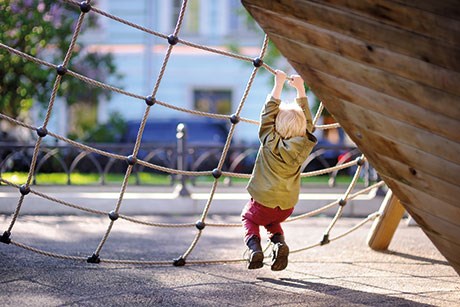
SPATIAL COGNITION…
develops from the moment of conception
For us humans, the process of growing into complex organisms capable of continuously sensing, learning and knowing the world begins when fertilization occurs.
From 11 weeks on, the foetus actively explores life in the womb through touch, sound, movement, taste and light. Holding, turning, kicking, walking, pushing against the wall of the amniotic sac and perhaps even putting thumb into mouth, the foetus learns what it can do in space as it occupies space, which also happens to be the very space that surrounds it.
After approximately 40 weeks, the foetus, now an infant, explores other ways to orient, move and cope with distance outside the womb by rolling, sitting, crawling, standing, walking, balancing, holding, building, tasting, smelling, feeling and touching. It is the very process of living and moving through space that we learn(ed) to control our body and use it to manipulate aspects of the world.
does not require language
Spatial reasoning can involve but does not necessitate written or spoken language. Research and theories on embodiment expose how pre-school children through to expert mathematicians think mathematically in ways that are both spatial and non-verbal. These include dynamic forms of mental imagery, modelling, drawing, gesturing and moving.
Moreover, studies linking language to neuronal activity within the motor and pre-motor regions of the brain confirm what parents and educators have always known implicitly – children learn best by doing. What neuroscience makes more explicit is that we make sense by engaging our senses and that language originates and never disconnects from the very actions that enabled it to emerge.
Imagine a child who hears the word ‘slide’ and immediately exclaims, ‘whoosh!’ while gesturing a quick and smooth downward hand motion with fingers held together in a flat angular position. This ordinary event, often observed as children play, highlights the ways in which simply hearing a word conjures up earlier experiences linked to sound and movement from the body.
This example also shows how it is not spatial cognition that requires language for definition but that it is language that requires (em)bodied spatial cognition for its meaning. The same can be said for mathematics where common terms such as flat, straight, longer, turn and flip only make sense when they are experienced spatially – not just from the neck up – but sensorially with one’s entire body.
depends on more than visual perception
Mathematician and teacher Dikran Tahta explained that all mathematics involves working spatially withimages. He also asserted imagery need not only be visual but can also be felt or perceived by some other sense(s). Just as language and spatial cognition evolves meaningfully from sensorimotor activity, making spatial sense and reasoning in mathematics requires all of our senses. Three examples in which spatial reasoning uses senses other than sight are:
- using your sense of smell to find the bakery with fresh baked bread;
- a person who is blind enters an unfamiliar room, slams the door behind her and listens to the sound it makes to determine the approximate size of the room;
- an infant whose eyes are closed drifts off to sleep while touching, turning and flipping his stuffed bunny until it is in his favourite cuddling position.
involves more than mental rotation
While the ability to mentally rotate 2D shapes and 3D objects is an important skill for spatial-visual thinking, it is one of many dynamic processes that occur physically, mentally or both.
What may appear as mental and abstract ways of thinking spatially in mathematics are actually not disembodied at all but emerge from and persist as bodily experiences and conceptual understandings. Other dynamic processes that enable us to reason in spatial ways about number and shape include: de/re/composing, un/re/packing, un/re/folding, distorting/morphing and a/symmetrizing.
In addition to rotating, other processes that focus on locating and moving include: sliding, reflecting, balancing, shifting dimensions, re/orienting, re/navigating and intersecting. Also important for spatial knowledge and mathematical ways of knowing are perspective-taking, imagining, comparing, contrasting and relating.
occurs in similar brain regions to mathematical activity
Researchers have found that both spatial and mathematical thinking require and depend upon similar neural networks in the brain, such as those responsible for mentally manipulating visual-spatial information. This makes visual-spatial working memory especially critical for children’s early mathematics learning.
Results from other studies report that children who remember and mentally manipulate visual-spatial information well also tend to complete mathematical tasks with greater ease.
is culturally learned
While inherently bodily, how we perceive and make spatial sense of mathematics is also shaped by our cultural ways of being. Every culture has specific spatial features embedded in its spoken, written, temporal, pictorial, spatial and symbolic mathematics language.
These meanings are neither innate nor obvious but learned and eventually become taken-for-granted ways of how we experience the world – for example, it might be considered common sense to assume that knowledge is an object, time is linear and the world is external to us.
Nor are the meanings of these embedded features universal. So, in Western mathematics, for example, we must learn how to ‘see’ a 3D cube in the 2D line drawing (see picture below). And to understand seven as higher than four, lower than nine and between six and eight, we must imagine the numbers arranged in ascending order along a vertical line.
cannot be achieved through screen technologies alone
When it comes to digital technology, researchers have found that children imitate actions and use corresponding real-world objects that they have seen on screen. However, they learn less from these digital environments and more from live face-to-face contexts until they reach at least three years of age.
In a study that examined how six-year-old children made sense of screen-based images, some children did not relate 2D representations to 3D objects in the same computer-generated environment.
Consider the differences between a child who sees and manipulates a 2D image of a ball on a touchscreen and a child who holds a ball and feels its curved surface and its spherical dimensions with her hands or rolls the ball on the ground to a friend.
What is important to keep in mind is that 2D digital images of 3D objects do not provide children with everything they need to make sense of 3D objects and our world at large. Experiences in the 3D world with other children, parents and educators are vital for the growth of children’s spatial mathematics knowledge and skills.
receives the least attention in school mathematics
Despite decades of research that identifies how spatial cognition underpins all areas of mathematics – especially early mathematics – spatial cognition in general and geometry in particular receive the least attention in school mathematics and are given even less emphasis in pre-school settings.
Moreover, when geometry is taught in the early years, instruction focuses on increasing children’s vocabulary through naming and sorting objects by properties. Children spend little if any time manipulating, comparing, classifying, composing, decomposing or recomposing 2D and 3D figures.
SPATIALISING EARLY YEARS MATHEMATICS
An (em)bodied approach to early years mathematics exploits the spatial, dynamic, bodily and cultural aspects critical to children’s learning. Important implications for educators to consider include:
All mathematics is spatial
Regardless of content areas such as number, operations, measurement, patterns, and geometry, all mathematics is necessarily spatial and can be conceptualised in distinct and multiple ways. For example, how might a number such as ‘four’ be imagined as:
- a collection of objects
- beats in one bar of music
- the number of degrees on a thermometer
- as a square
All spatial activity is (em)bodied cognition
Engage more than children’s sense of sight in their maths learning. Involve their sense of touch, movement, hearing and smell as well as more intuitive senses such as proprioception – knowing where one’s body parts are relative to other body parts. Observe and explore with children how their sensory-rich perceptions and gestures enable them to make (non)verbal sense of spatial ideas.
Develop children’s reasoning skills beyond verbal language. Given that both quantitative and geometric reasoning is inherently spatial and thus does not require language, help children to learn how they may use their senses for reasoning. For example: How can you tell how much rainfall there is outside by listening to the sound it makes? How might you explore what is the same and different about rolling down a hill compared to sliding down it?
Emphasise language as connected to action. What does a straight line look like? Feel like? Sound like? Move like? What about a curved line? Two curved lines?
Recognise that mathematics is a cultural practice. What spatial meanings are embedded in a culture’s mathematics language? For example, the Japanese words for 11, ‘juu-ichi’ which translate as ‘ten-one’, and 12, ‘juu-ni’ as ‘ten-two’, embed ‘base ten’ meanings of ‘tens’ and ‘ones’. Notice also that in Icelandic, ‘tveir’ is used to communicate the abstract number two, while ‘tveggja’ is used to communicate the period of ‘two years’ – and is spoken more slowly than the first term to evoke the passage of time.
Mathematical concepts and meanings are neither innate nor obvious
Spatial mathematical ideas and meanings do not ‘exist’ in blocks, puzzles, apps or the world at large, but rather depend on how the senses are engaged and the sense children make from these experiences. Important considerations include:
Environments What concepts do various contexts engender? For example, screen-based apps emphasise projected visual, virtual, dynamic and manipulative 2D environments, while the outdoors in contrast can offer 3D, life-scale spaces that surround children with sounds, smells, visuals, material objects and and enable them to move their entire bodies.
Activities What sensory-perceptual experiences are possible in particular activities? How do the activities in which children participate accentuate, diminish or make certain mathematical concepts and meanings possible? In what ways might children’s experiences and perceptions vary as they: see an image of a triangle, hear the word ‘triangle’, draw a triangle, cut a triangle from a piece of paper or trace around a block with a triangular base?
Perspective and orientation What might the bird see as it flies over the dog that is sitting on the grass? What might the dog see as it looks at the bird flying overhead? What do the children see as they look at the dog on the grass and the bird in the sky? Ask children to compare what they see, feel and hear when they stand outside a cardboard box and then when they stand inside it. What about ‘coming here’ versus ‘going there’? What becomes noticeable when the soup tin is standing up and when it is on its side?
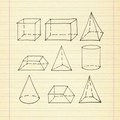 Purpose of an activity How does the intended purpose of an activity enable certain spatial ideas and thinking to emerge, while making others unlikely? For example:
Purpose of an activity How does the intended purpose of an activity enable certain spatial ideas and thinking to emerge, while making others unlikely? For example:
- assembling a puzzle
- fitting block shapes through the corresponding holes
- folding (and cutting) paper of various shapes
- touching an object which cannot be seen then looking for another object that is exactly the same, in some way similar or completely different from it.
- using 2D and/or 3D shapes to create larger or different 2D shapes or 3D objects
- looking at only a shadow of an object (for example, a circle), physically or virtually create the possible 3D object(s)
Mathematical ideas and ways of thinking are dynamic
Just as the spatial processes discussed earlier such as balancing, symmetrising and de/re/composing are critical to developing children’s spatial sense and reasoning in mathematics, so too are the ways that children body these forth. Examples that are often considered to be static re-presentations or means by which children become aware of mathematical concepts and relationships include: ? drawings ? diagrams ? pictures ? gestures ? motion ? concrete materials ? contexts ? words ? symbols ? sounds.
When these are understood as dynamic sources and activities with which and by which children develop their spatial mathematical awareness, they cease to be only products or artifacts of children’s awareness. Children’s drawings and gestures, for example, not only serve as their spatializing of mathematics, they also become potential opportunities in which to further their exploration, their thinking and generating of new questions.
CONCLUDING THOUGHTS
With the demand for STEM skills in the workplace and our everyday lives becoming increasingly digital, the mounting evidence by researchers further supports how important spatial thinking is for children’s mathematics learning. The (em)bodied perspectives presented in this article and the pedagogical insight they offer provide educators with responsive ways to understand and encourage children’s spatial cognition in early years mathematics.
SPATIAL AWARENESS AND STEM SUBJECTS
For the past two decades, researchers have investigated the vital role that spatial skills play in Science, Technology, Engineering and Mathematics. Here are some examples that illustrate their importance:
Science
Whether a scientist is studying the structure of a molecule, how objects move in space or the formations on earth, spatial reasoning is crucial.
One problem that structural geologists must solve is to identify the processes that create the characteristic shapes and forms of mountains.
Technology
Spatial tasks range from using and producing computer software for animation, graphic design or special effects to transforming 2D images to 3D ones. Other skills such as designing a kitchen or recreating weather systems all involve spatial thinking.
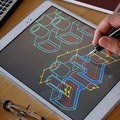 Engineering
Engineering
Each phase in inventing new structures demands spatial reasoning. Creating new designs requires engineers to conceptualise each part and how the components work together as a coherent structure from multiple perspectives.
Mathematics
Spatial cognition is no less profound in mathematics than the other three subject areas.
Any discussion about spatial reasoning in mathematics must include philosopher and mathematician René Descartes. In contrast to the ‘Cartesian split’ for which he is so famous (see above), Descartes transformed mathematics and the world by integrating shape and number into the coordinate system known as Cartesian or analytic geometry.
The extent to which Descartes revolutionised mathematics is clear; today, most if not all branches of the discipline are grounded in both spatial and quantitative concepts.
Mathematician René Thom argued that all magic in mathematics is inherently geometric and hence, spatial.
This ‘magic’ applies to simple arithmetic, such as how 4 × 3 = 12 can be imagined as a rectangle with a length of four units, a width of three units and a total area of 12 square units. But it also applies to more complex mathematics – for example, algebraic equations generated from geometric patterns.
Dr Jennifer S Thom is associate professor, mathematics education and curriculum studies, University of Victoria, Canada


